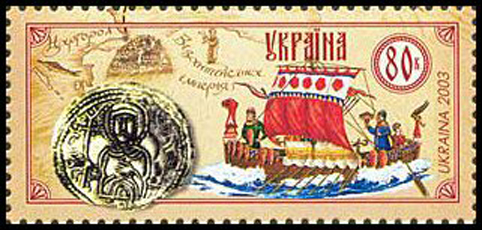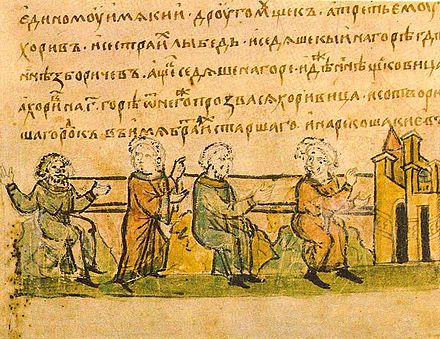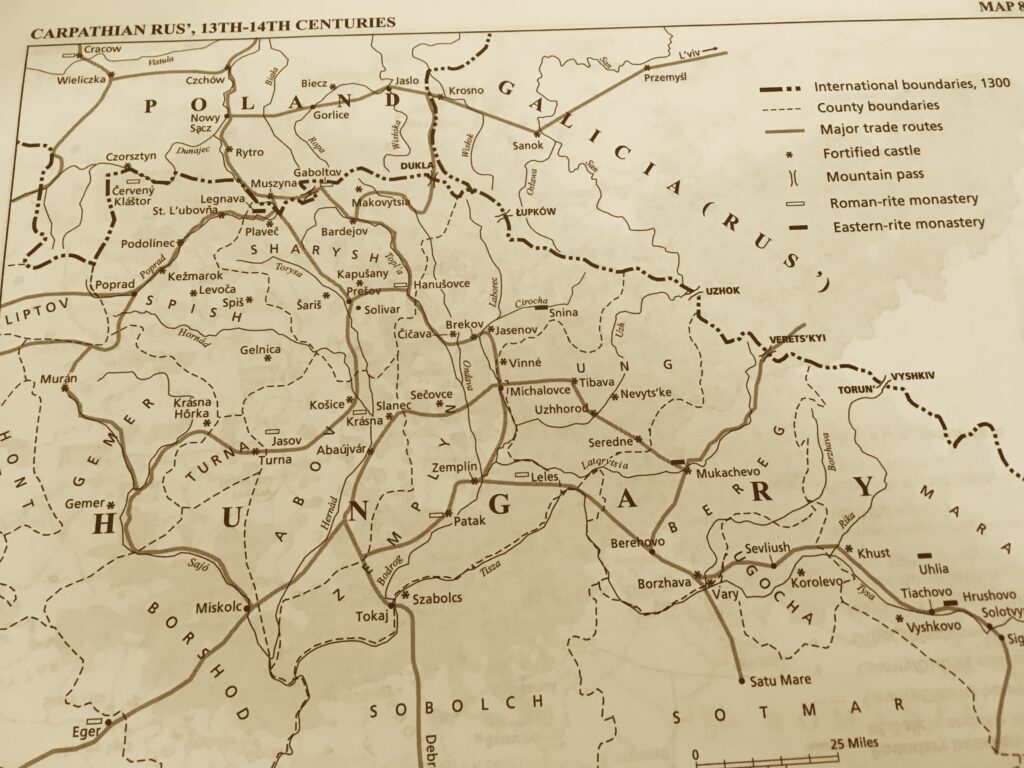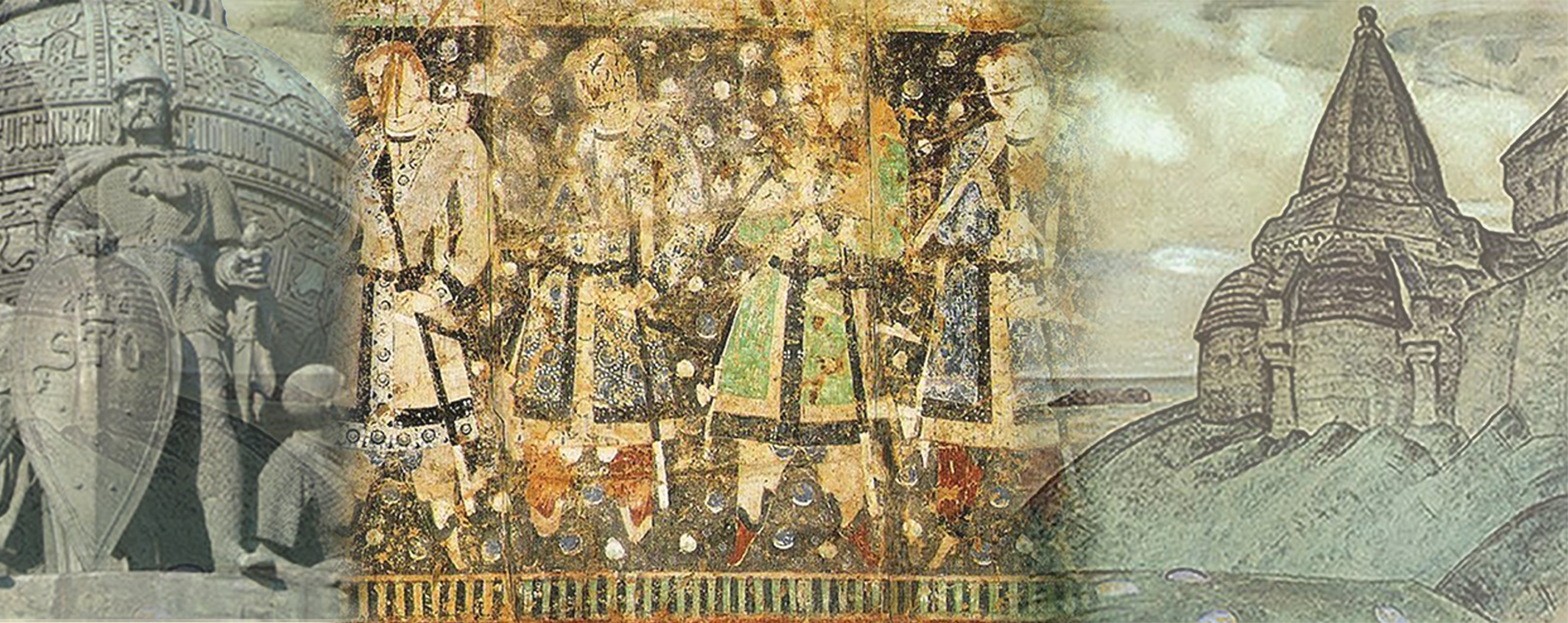Tale of Bygone Years is a chronicle of Kyivan Rus from 850 to 1110. It is believed to have been initially compiled in or near Kyiv in the 1110s. Tradition ascribed its compilation to the monk Nestor beginning in the 12th century.
The Varangians were Viking conquerors, traders, and settlers, mostly from present-day Sweden. From the 8th and 9th centuries, they settled in the territories of present-day Belarus, Russia, and Ukraine. They established the state of Kyivan Rus and the principalities of Polotsk and Turov. Archaeological excavations have shown an ancient settlement from the 6th century. According to the Primary Chronicles, Kyi (also Kiy, Kij, or Kyj), Shchek, and Khoryv (Кий, Щек, Хорив) are the three brothers, along with their sister Lybid (Либідь), were the founders of medieval Kyiv city, the capital of Ukraine.
The Rurik dynasty, also known as the Rurikid or Riurikid dynasty, was a noble lineage allegedly founded by the Varangian Prince Rurik. It began the ruling dynasty of Kyivan Rus and its principalities. The southern Lemko region belonged to Kyivan Rus’ sphere of influence from the mid-10th century from the eastern part of the northern Lemko region, extending to the Wisloka River. In the 1020s, the southern Lemko region was ruled by Hungary. By 1054, after Yaroslav the Wise’s death, the major principalities of Kyivan Rus became increasingly fractured and independent. In 1199, Prince Roman Mstislavych united Galicia and Volyn’s two previously separate principalities. His son, Danylo (reigned 1238–1264) sought support from the West and accepted a crown as the King of Ruthenia (Galycia-Volyn) in 1253, crowned by Pope Innocent.
The Lemko Region became part of Poland during the first significant stage of the history of the Polish state ruled by the medieval Piast dynasty between the 10th and 14th centuries. It was frequently disputed with the neighboring Rus’ when in 981 A.D., Volodymyr I of Kyiv invaded the area, taking the town of Sanok, which was at the crossroads of a trade route. In 1018, it returned to Poland and back to Rus’ in 1031. By the year 1340, Casimir III, recovered it for Poland.
The “Gord” of Sanok is mentioned in 1150.
Gord/город (horod, toponymic: misto) is a medieval Slavonic fortified settlement, usually built on strategic sites such as hilltops, riverbanks, between the 6th and 12th centuries in Central and Eastern Europe. Typically, it consisted of wooden houses surrounded by a wall made of earth and wood and a palisade, a row of closely placed, high vertical standing tree trunks or wooden or iron stakes used as a fence or defensive wall that formed a stockade running along the top of the bulwark.




